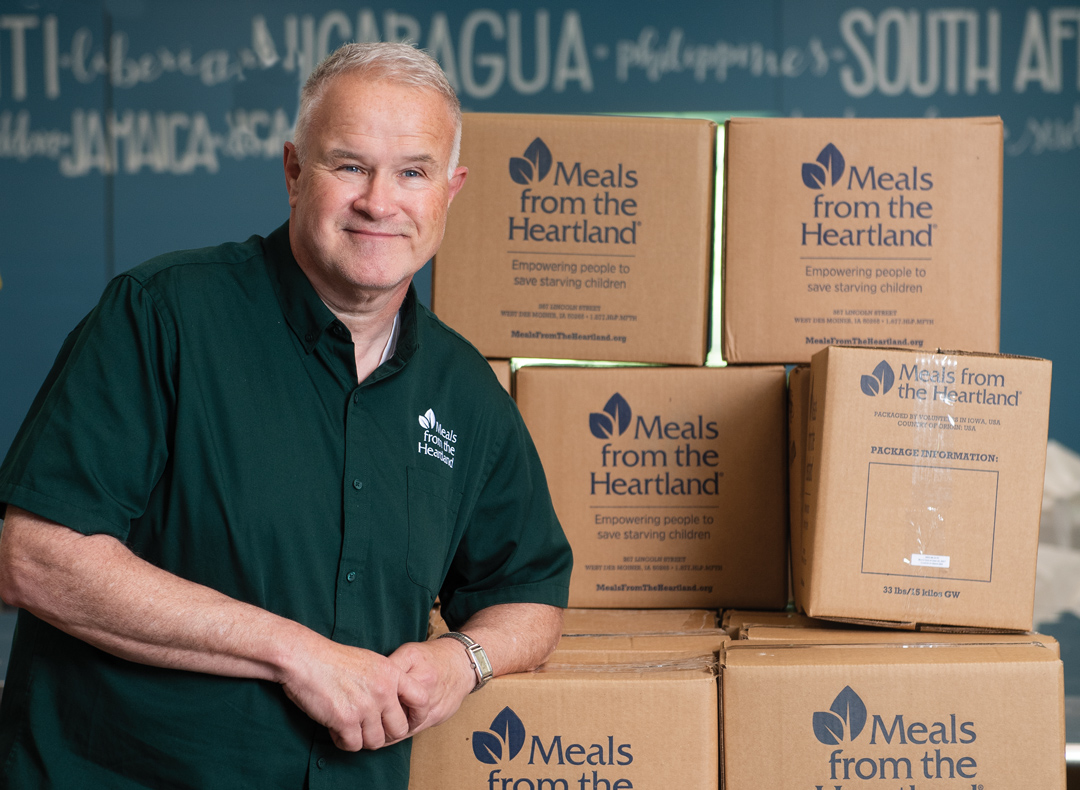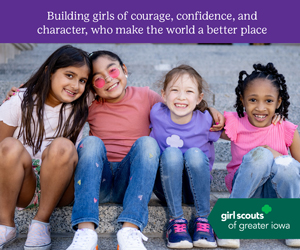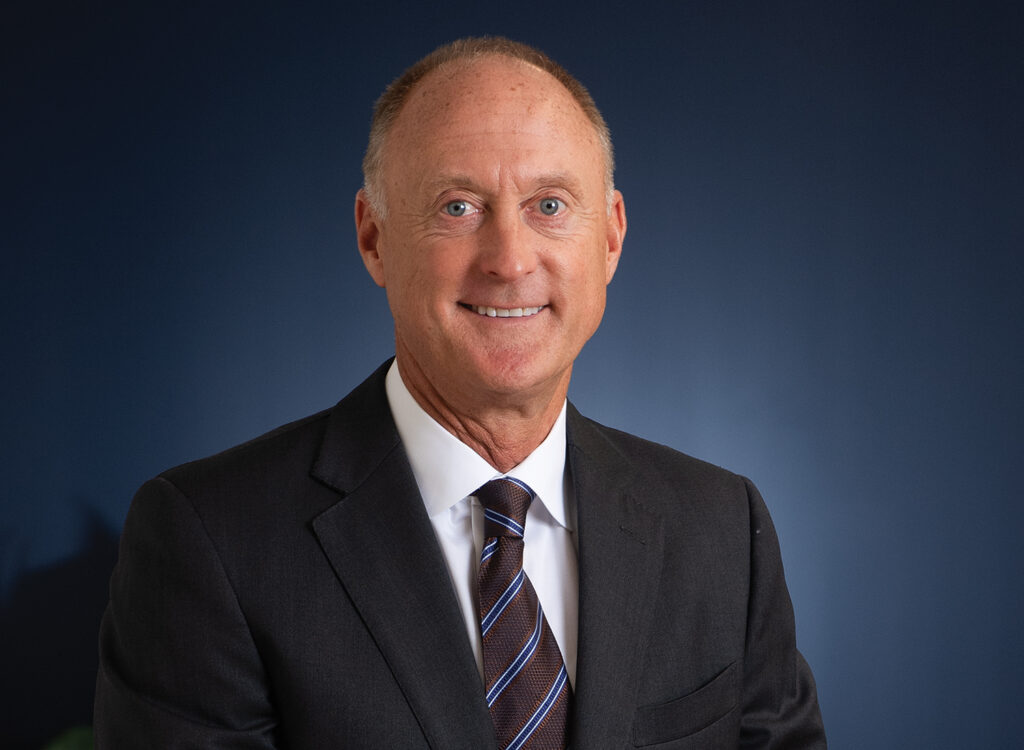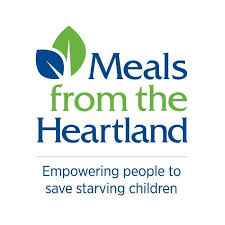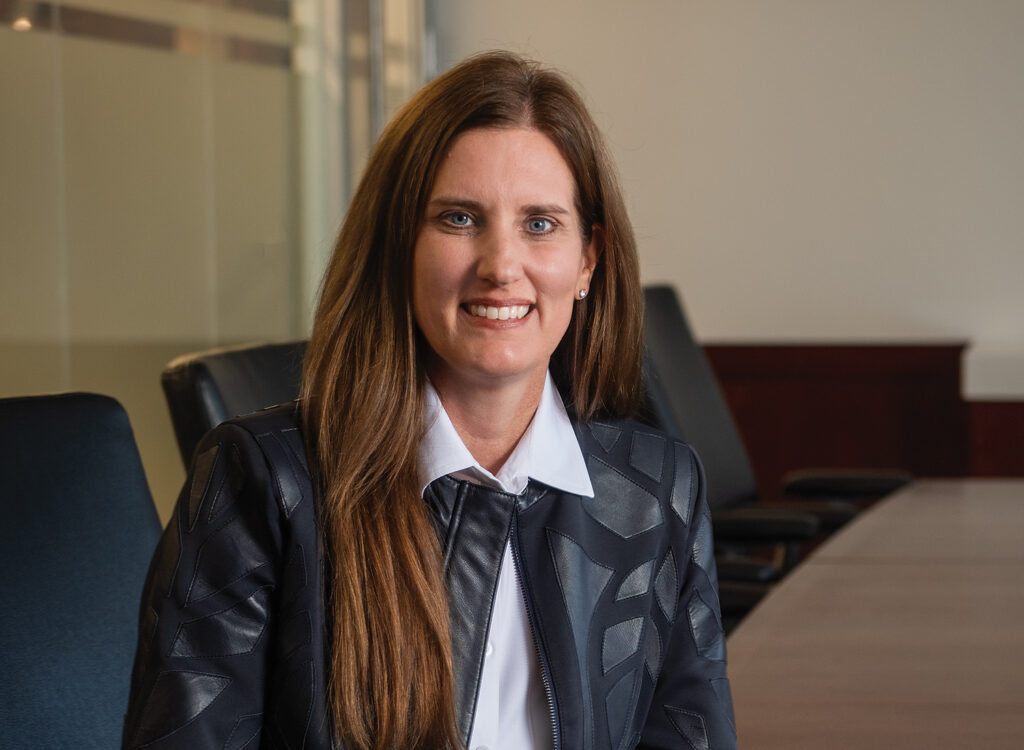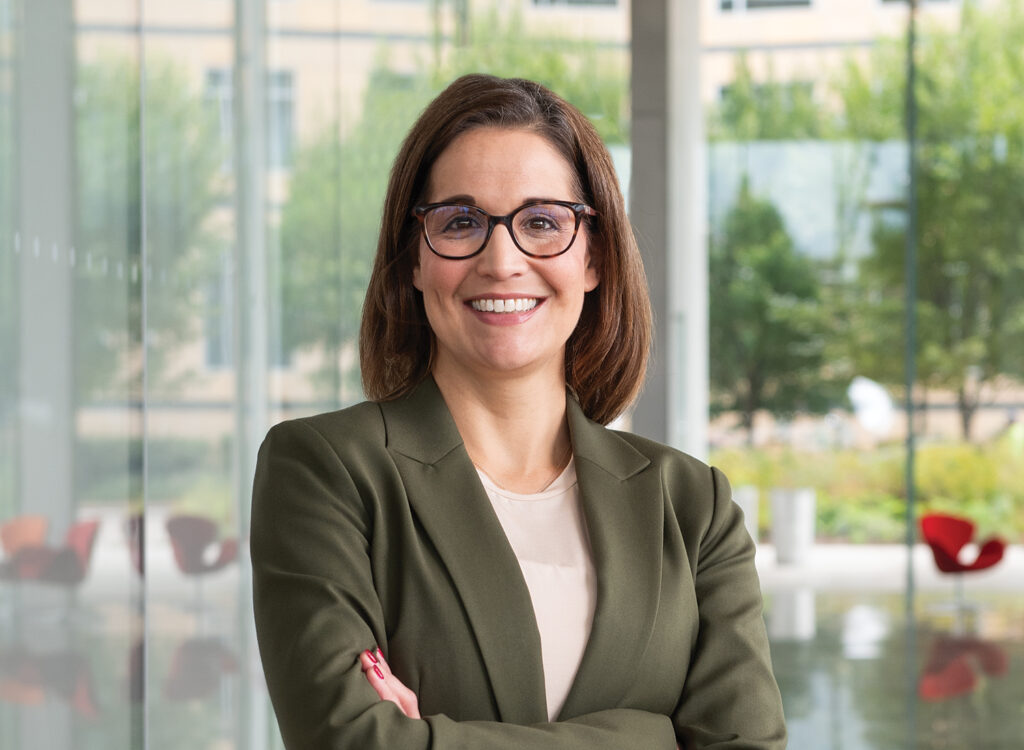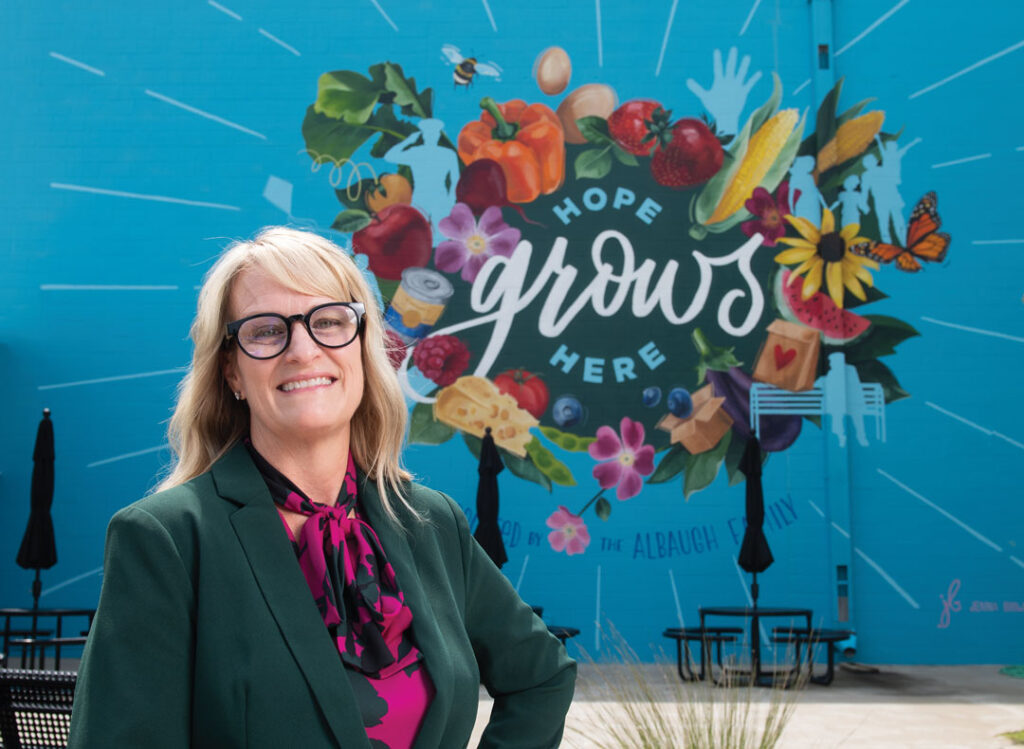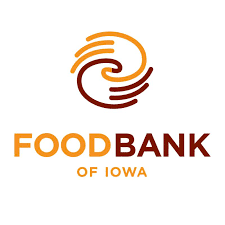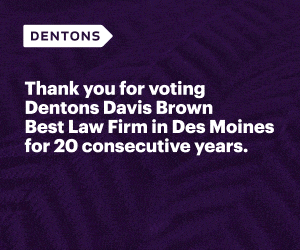Meet new Meals from the Heartland executive director Chuck Current
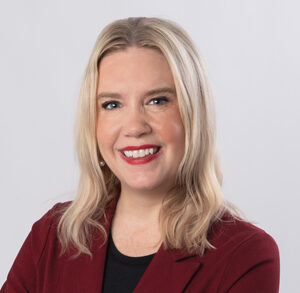
There is one specific sign to look for to signal that Chuck Current, executive director of Meals from the Heartland, is going to ask for money.
He’s wearing long pants.
Current loves to wear shorts. But when it’s money-asking time, it’s also pants time.
“I’ve never asked for money for something that I didn’t feel strongly about,” said Current, who took over the executive director role in January. This is his first role with a nonprofit, but it’s not his first time fundraising.
Current has been involved with fundraising and community development activities through the Maquoketa Betterment Corp. in his hometown. He also was part of a team that built a coworking space on Main Street in Maquoketa.
Before coming to Meals from the Heartland, Current lived and worked in Minneapolis, Omaha and Iowa, and gained more than 35 years of experience in the insurance, banking and mortgage lending industries. He has also been a longtime supporter and volunteer with Meals from the Heartland.
The Business Record sat down with Current to talk about his first few months in the Meals from the Heartland role and his views on food insecurity globally and in Iowa.
This Q&A has been lightly edited for clarity and brevity.
Tell me a little bit about the history of Meals from the Heartland.
In 2008 there was a Lent project at Lutheran Church of Hope. And interesting enough, my wife and daughter and I were members of Hope at that time, and their goal was to pack a million meals during Lent, which your mind exploded, right? Because you’re thinking, ‘How in the world are we going to pack a million meals?’ And they actually brought construction trailers on site. Well, of course, knowing Hope, they overachieved that goal. And so they packed way more than a million meals. And then as a group, a small group of folks got together from Hope and thought, ‘This is something that we could do on a more permanent basis.’ So 2008 is the year that we incorporated, and became a 501(c)(3) organization. Since that time, we have packed about 258 million meals and involved thousands of volunteers. So that’s how we got our start, and at that point, I don’t think they had any employees. Everybody was a volunteer. Today, we have 12 employees.
Meals from the Heartland has grown its workforce and the number of meals packed. How has the growth happened?
Unfortunately, there’s a need, and so people feel very compassionate and generous. So we’re very well known. I think one of the struggles that we are trying to balance is there’s a really unique balance between raising money to pay for the ingredients and getting volunteers to come in and package the ingredients. So when Meals from the Heartland first started, first of all, ingredients were not as expensive as they are today, and we had very generous donors. Really what we needed was a lot of volunteers and not a lot of donations. Well, that has flipped, and now we’re very much trying to balance: How many donations can we get to pay for the ingredients for the volunteers coming in? There are groups that come and say, ‘Hey, we want to volunteer. We want to bring 50 people in.’ Well, to give you an idea, 50 people in a 2-hour time frame could easily pack 20,000 meals. That costs $5,800, and I don’t think people realize that. Last year, in 2024 we had 60,000 volunteers through our doors. Now that’s packagers, and it’s also all of our support staff — everybody who washes dishes, who sweeps the floor, who are what we call pack masters, who train new groups coming in, our labelers. Those are all done by volunteers. So it’s very volunteer intensive, and we’ve been really blessed by that. One of the things that we are trying to do, we are really focused on the volunteer experience. If you’re someone who is really on fire for food insecurity, if that’s speaking to your heart, and you come here and pack, which is fabulous, what’s next? Do we talk to you about bringing a friend group?
Since 2008, Meals from the Heartland has provided over 230 million meals for Iowa and around the world. How do you balance the needs here versus the global needs?
Last year, in 2024 in Iowa, we distributed 952,000 meals. We are projected, through the end of June of 2025, to have actually distributed over a million meals in Iowa. So we’re very much working with the Food Bank of Iowa, DMARC, Food Bank of the Heartland, which is in Omaha that serves western Iowa, River Bend Food Bank in the Quad Cities, HACAP in Waterloo/Cedar Falls. We’re really trying to come to the table and answer those needs around, ‘What can we do to help?’
And the other thing we’re trying to do is, we have been so focused on our job of producing meals, and sometimes we feel a little left out of some global discussions around hunger and food insecurity. That’s because we didn’t participate, we didn’t go. And if you don’t go, if you don’t show up, you’re forgotten. And so we’re trying to be much more diligent about participating in all of those discussions around food insecurity and trying to understand what our role is today and what our role should be in battling food insecurity. Here in Central Iowa, DMARC released information that one in four kids in Central Iowa experience food insecurity regularly. What is our role in that?
It’s interesting, we are just going through a strategic planning process. We recently sent surveys to all of our employees, all of our board and all the food banks in Iowa. Today, we’ll be sending out surveys to everybody who’s hosted a hunger fight in the past with us, and then over 19,000 volunteers and donors will all get a survey. Now they’re different surveys, but they ask what’s the role we should be playing? We were focused overseas and internationally, and so the majority of our meals go there, and I think they always will go there. But is there a bigger role that we should play in Iowa? And I think a lot of people will be surprised that a million meals stay here. I’m super excited to have those strategic planning discussions with our partners to determine what our role should be.
That’s a real soul searching moment for you.
Absolutely. So the Cedar Rapids hunger fight, for instance, we’re doing 250,000 meals in Cedar Rapids. Their request is we’d like those meals to stay in Iowa. We do a Quad Cities hunger fight again this month, 60,000 meals. Those meals are all staying in the Quad Cities. This year for the first year, and we’re super excited about this, is the Iowa Hunger Summit, sponsored by the World Food Prize Foundation. It’s July 16, and they have 200 to 250 food insecurity champions from Iowa come in and talk about food insecurity. We’re actually doing a packing event during that with 100 to 150 volunteers right in the Hall of Laureates on their grounds. But again, it’s just we’re super excited to be part of those discussions. And here’s how we can help meet the need here in Iowa.
You didn’t start off working in nonprofits. You were in insurance. Why is hunger the fight that you signed up for?
I spent 10 years at Principal, spent 15 at Wells Fargo and then some other banks. But all during that time, I was always serving on boards. When I was at Wells Fargo, I was on CFUM, which at that point was Children Family Urban Ministries. At that point, it was a charity mission of the United Methodist Church, and it was located north of downtown in the River Bend area, and we served breakfast every morning for kids and we had a supper club. All my board service has been around social services. When we were in Omaha for eight years, I served on the Siena Francis house, which was a homeless center. Also provided meals. So that’s always been my heart and I thought, because I had volunteered here many times before, ‘Boy, this would be a neat place to have a job.’ The opportunity presented itself, and it’s a great opportunity, working with fantastic people making a difference.
Interestingly, I just got back from the Dominican Republic. We actually were in a preschool of 3-, 4- and 5-year-olds, and we got to serve our food. To just be there with pots, serving our Hearty Pack meals to little kids who were so excited and so thankful to see you is really life changing. Next year, we’re taking four of our team members. We work with Convoy of Hope, which is our distribution partner internationally. They’re the second largest relief and disaster organization in the country, right behind Red Cross. They’ll determine where that trip is to, but I’m super excited to get four of our folks to go and really experience that firsthand experience of this may be the only meal that this kid gets today and how important that is.
You’ve quoted a couple of statistics on hunger. What is the one right now that is most surprising to you?
The most devastating: The World Health Organization released a statistic that says somewhere in the world, every 10 seconds a child perishes because of severe malnutrition or starvation. That sticks with me. We had a volunteer event where we bring a lot of our volunteers, and we have a nice dinner and we thank them. I had the opportunity to thank them. I used that statistic, and I said, ‘In the 3 minutes since I welcomed you, 18 kids are no longer alive. That’s why we do what we do, and we have to figure it out.’ I think our role is, how can we help? And if we can get more people involved and contribute and be active on both sides of that equation because we’re more involved in Iowa, absolutely, we will do that all day long. So all gloves are off. We have to do whatever we can with whoever we can to try to eradicate hunger here and globally.
In this position, what have you learned about yourself? How would you describe yourself as a leader?
I think when you spend a lot of time in corporate America, you’re really competitive. And you’re always measuring yourself against peers. And I think this job, we just really want to do a good job and help kids. We’re not competing with anybody. There are other organizations that do exactly what we do, good for them. The other thing too, is, this is a Christ-centered organization, and so that creeps into a lot of things we do. We pray at every staff meeting. Kind of gets your heart right and your head right. A lot of times those prayers are just, ‘Lord, will you just slow my mind? Let’s take a minute. Let’s pause. Let’s focus on what we’re really doing here. Let’s not get a lot of things in the way.’ That focus, I think is tremendously beneficial to me personally, and I think it’s also great for our staff. Now we have pressures like everybody else. You have to make this phone call, but when it gets down to the end, when you’re saving starving kids, you can really focus on that. I think that’s great.
What are you reading right now? And how is that informing your work as a leader?
‘The Crux.’ It is a strategic planning book around what is the crux of the problem? Not a bunch of peripheral stuff. And let’s execute that. I’m reading that in preparation for our strategic planning discussions.
What’s one thing that you want to learn right now about hunger?
How do we creatively fill gaps that we don’t know exist? I’m interested and excited to learn. What else can we do? How do we create advocates? How do we create evangelists around food insecurity? Are there things that we just never even thought about? I’ll give an example. When Caitlin Clark hands out backpacks, why isn’t there a Meals from the Heartland meal in that backpack? It’s probably because we’ve never asked Caitlin Clark’s foundation. So it’s just that kind of creativity.
At a glance:
Hometown: Maquoketa, Iowa
Education: Bachelor’s of business administration in marketing from University of Iowa
Family: Wife Wendy and daughter Kelly
Hobbies: Reading, gardening and spending time with his dog Dudley
Age: 64
Resides: Urbandale

Lisa Rossi
Lisa Rossi is a staff writer at Business Record. She covers innovation and entrepreneurship, insurance, health care, and Iowa Stops Hunger.

